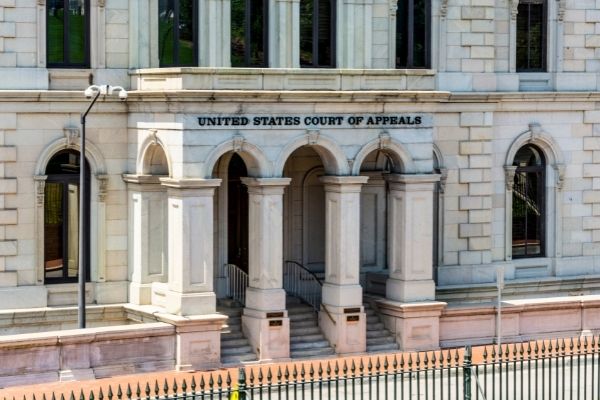Ideal Federal Appeal Lawyers: Achieving Justice in Federal Appeals
Ideal Federal Appeal Lawyers: Achieving Justice in Federal Appeals
Blog Article
Debunking the Process of Federal Appeals: What You Need to Know
Browsing the elaborate realm of federal charms can commonly appear like traversing uncharted waters for those unknown with the process. Comprehending the subtleties of appellate court territory, the details of filing a notice of appeal, offering a compelling short, and making a convincing oral disagreement are crucial elements that can dramatically impact the end result of an instance. By unraveling the layers of complexity bordering government allures, individuals can get a clearer insight into the mechanisms that regulate this critical point of the lawful system.
Recognizing Federal Appeals Process
Looking into the detailed realm of the government allures process unveils a structured and systematic journey via the judicial system. Federal allures serve as an essential system for examining choices made by reduced courts. Comprehending this procedure is crucial for anybody entailed in legal process at the government level.
The procedure commonly starts with a party dissatisfied with a lower court's ruling submitting a notice of appeal. This activates a review by a greater court, where a panel of courts examines the legal arguments provided by both celebrations. Briefs describing the lawful reasoning behind each celebration's placement are sent, and dental arguments may be heard to clear up complex concerns.
The appellate court's decision is based on a comprehensive assessment of the lower court's proceedings and the arguments offered. Once the appellate court reaches a decision, it can affirm, turn around, remand, or change the lower court's judgment, supplying quality and finality to the legal conflict.
Appellate Court Territory Explained
Appellate court territory refers to the extent of situations that a particular appellate court has the power to decide and evaluate upon. Unlike test courts that hear instances for the very first time, appellate courts are limited to examining decisions made by lower courts.
Appellate courts have territory over details kinds of cases, normally those including lawful mistakes, procedural issues, or concerns of regulation instead than valid disputes. The territory of appellate courts is generally described in statutes and legislations that control the court system. Recognizing appellate court jurisdiction is essential for celebrations associated with the appeals procedure as it determines whether an instance is qualified for evaluation and the extent to which the appellate court can interfere in the reduced court's decision.
Filing a Notification of Allure
The initial action in starting the government charms process entails filing a Notification of Allure with the suitable appellate court. This crucial document officially alerts the court and the various other events associated with the instance that the appealing event plans to seek a review of the lower court's choice. Filing a Notice of Appeal is a rigorous procedural requirement that establishes the appellate procedure moving.
When preparing the Notification of Allure, it is necessary to make sure compliance with the certain regulations and standards of the pertinent appellate court. federal crime lawyer. The document must typically include details such as the case name, the reduced court's name, the date of the judgment being appealed, and a concise declaration suggesting the premises for the charm

Rundown and Dental Disagreement
In the appellate procedure, providing composed briefs and participating in oral disagreements play essential duties in supporting for the appealing party's setting prior to the appellate court. Briefs are extensive lawful papers that outline the events' arguments, lawful authorities, and analysis supporting their positions. These composed submissions provide the court with a detailed understanding of the facts of the situation, the appropriate legislation, and why the appealing event believes the reduced court's decision should be rescinded.
Following the entry and review of the briefs, oral disagreements use the parties a possibility to further clarify their positions, deal click for more info with any kind of concerns the appellate judges may have, and emphasize crucial points from their composed briefs. Dental debates are a chance for the lawyers to persuade the judges through spoken campaigning for and reactions to inquiries from the bench.
Both the written briefs and oral disagreements are critical parts of the appellate procedure, permitting celebrations to offer their case completely and compellingly before the appellate court. - federal crime lawyer
Obtaining the Appellate Court Decision
Upon conclusion of oral debates and entry of composed briefs, the next pivotal stage in the appellate process entails waiting for the decisive judgment from the appellate court. This duration of expectancy can be full of a mix of anxiousness and expect celebrations involved in the charm. The appellate court's decision is generally provided in a created format and describes the court's conclusions on the lawful concerns offered, the reasoning behind their decision, and the judgment made. The time framework for getting the appellate court's choice can vary, however courts make every effort to offer timely resolutions. Once the choice is provided, parties need to very carefully evaluate the court's judgment to comprehend the end result and determine any type of more steps that may be necessary. Whether the appellate court attests, reverses, or remands the lower court's choice, understanding the effects of the ruling is critical for all parties associated with the appellate process. Promptly assessing and understanding the appellate court's decision is vital in navigating the following steps in the legal proceedings.
Final Thought
Finally, the government charms procedure is a complicated however critical action in seeking justice. Recognizing the appellate court territory, submitting a notice of appeal, preparing briefs, and presenting dental arguments are all vital elements of this procedure. Inevitably, receiving the appellate court decision can provide quality and resolution to legal disputes. It is necessary to navigate the federal charms procedure with persistance and attention to information to accomplish a reasonable result.
As we progress from comprehending the federal charms procedure to studying the intricacies of appellate court jurisdiction, an essential element comes to light concerning the authority and restrictions of these greater courts in the legal landscape. Appellate court territory refers to the scope of situations that a specific appellate court has the power to evaluate and choose upon. Unlike test courts that hear cases for the very first time, appellate courts are restricted to reviewing decisions made by reduced courts. Understanding appellate court territory is crucial for events included in the appeals process as it figures out whether a situation is eligible for evaluation and the level to which the appellate court can intervene in the lower court's choice.

Report this page